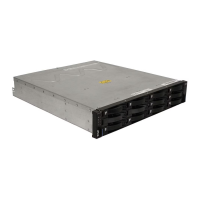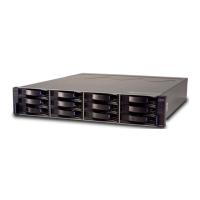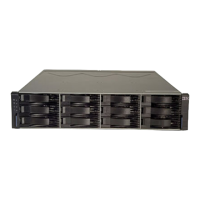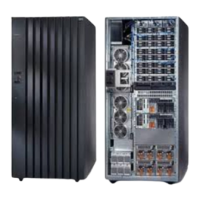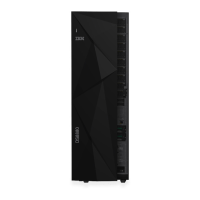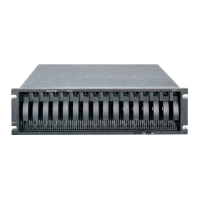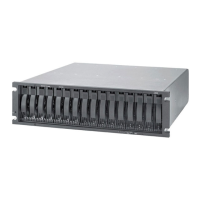Chapter 3. IBM System Storage DS3500 Storage System planning tasks 51
Draft Document for Review March 28, 2011 12:24 pm 7914DS3KPlanning_090710.fm
Figure 3-14 RAID 0
RAID 1 and RAID 10: Disk mirroring and disk mirroring with striping
RAID 1 is also known as disk mirroring and is a mirrored pair of drives without parity. RAID
Level 1 uses exactly two drives to mirror the data between them. A RAID 10 (Figure 3-15 on
page 52) array is automatically created when you create a RAID 1 array with four or more
drives (two pairs of drives). RAID 10 is also known as RAID 1+0 and disk mirroring with
striping, and it implements block interleave data striping and mirroring. In RAID 10, data is
striped across the physical disk drives, and each of those drives is then mirrored to a second
drive. The DS3500 storage subsystem supports a maximum of 96 drives in a RAID 10 array.
RAID Levels 1/10 provide good redundancy; in the case of a single disk failure in each
mirrored pair, the array and associated logical drives become degraded but all the data is still
available and accessible from the second drive of the mirrored pair.
For each pair of mirrored drives, read operations can be performed from either physical disk
of the mirrored pair. Write operations are performed by writing to both physical disks of the
mirrored pair. In this manner small blocksize writes can be completed very quickly, making
this RAID type a great solution for a high write intensive application when data protection is
desired. For example, this RAID type is generally preferred by database administrators.
However, because the data is mirrored, the capacity of the associated logical drives on a
RAID 1 or RAID 10 array is 50% of the physical capacity of the hard disk drives in the array.
Attention: The failure of a single disk in a RAID 0 array will cause the failure of the entire
array and all of the associated logical drives, and access to all data on the array will be lost.
For this reason, the best practise is to never use RAID Level 0 for critical applications that
require high availability.
Note: RAID Level 1 is a specific implementation of RAID Level 10 that uses exactly two
drives to mirror the data between them. A RAID Level 10 array is automatically created
when you select four or more drives in a RAID 1 array.

